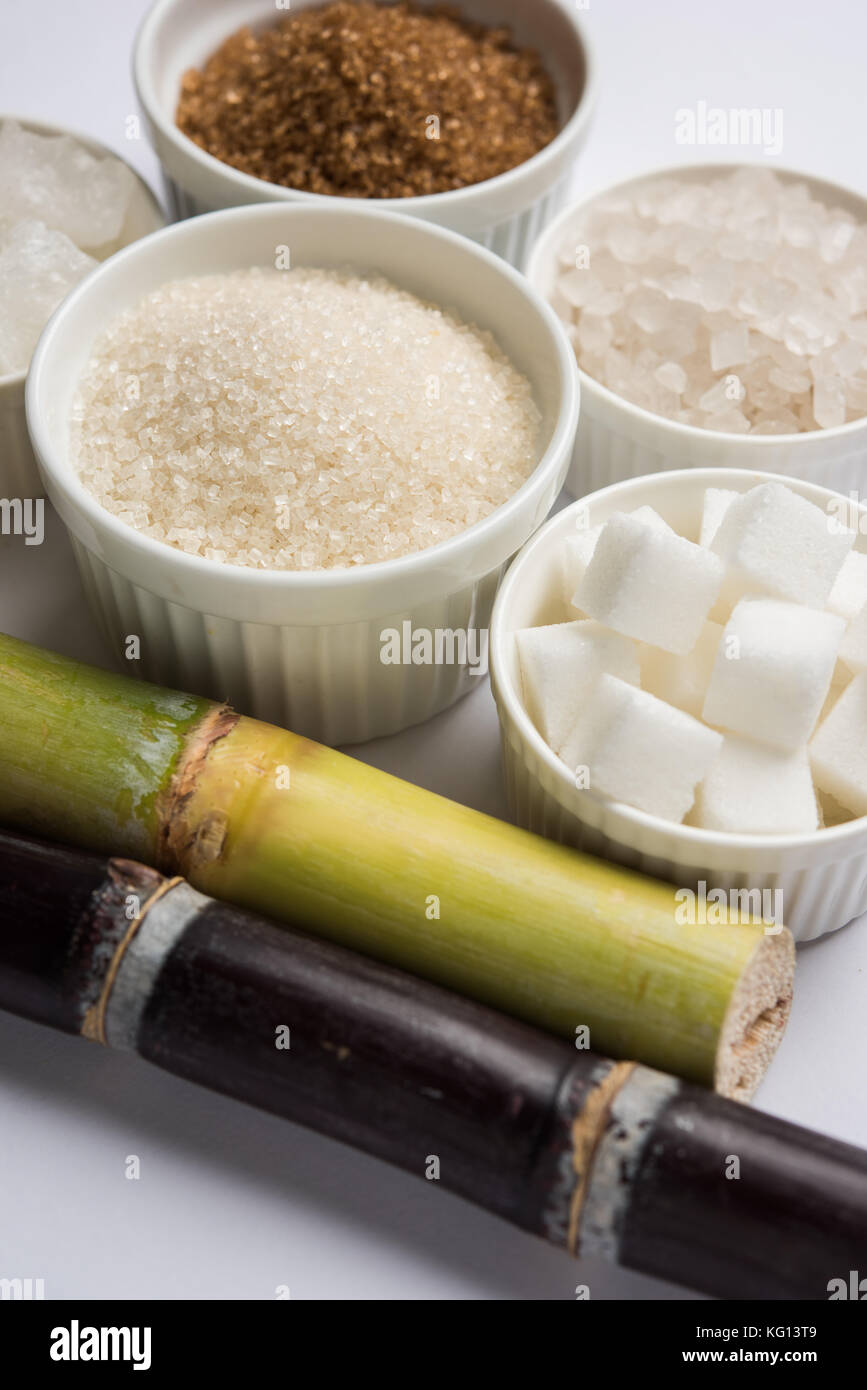Sustainable sugar cane products That Encourage Environmentally Friendly Living
Wiki Article
A Deep Dive Into Sugar Cane: Insights on Production, Product, and Item Growth
Sugar cane plays a crucial function in agriculture, underpinning economic climates in tropical regions. Its cultivation involves elaborate processes influenced by different environmental variables. Cultivators deal with significant challenges, consisting of climate adjustment and market variations. Developments in product growth are emerging in action to advancing consumer needs. Understanding these dynamics is necessary for realizing the future of this crucial crop and its effect on international markets. What exists ahead for sugar cane and its myriad applications?The Importance of Sugar Cane in Global Farming
Sugar cane serves as an important crop in international farming, underpinning economic situations and food systems in lots of tropical areas. This flexible plant is mainly cultivated for its high sucrose content, which is refined right into sugar, a standard active ingredient in plenty of foodstuff. Past sweetening, sugar cane is additionally vital for generating biofuels, specifically ethanol, adding to energy sustainability.The economic importance of sugar cane expands to employment, supplying source of incomes for millions of farmers and workers in handling facilities. In several countries, sugar cane cultivation and processing stand for substantial parts of farming GDP, influencing profession equilibriums and regional development.Additionally, sugar cane's versatility to numerous climates boosts its importance as a plant, guaranteeing regular supply in worldwide markets. Its byproducts, consisting of molasses and bagasse, even more expand its energy, making it a crucial part in food, power, and industry. On the whole, sugar cane stays a foundation of agricultural efficiency worldwide.Farming Procedures: From Planting to Harvest
Cultivating sugar cane includes a collection of well-defined procedures that ensure ideal growth and return. The cultivation begins with land preparation, where the soil is tilled to protect ideal oygenation and water drainage. Following this, seed cane, which is composed of fully grown stalks, is selected and cut right into segments (sugar cane products). These sections are after that planted in furrows, ensuring appropriate spacing to permit for sunlight and nutrient access.Once grown, irrigation systems are utilized to keep sufficient wetness levels, as sugar cane prospers in moist conditions. Weeding and bug management are important throughout the growing period to minimize competition for resources. Nutrient application, including fertilizers, supports durable growth. As the plants mature, keeping track of for illness and insects continues.Harvesting usually happens 10 to 24 months post-planting, depending on the variety. The walking sticks are reduced close to the ground, making sure very little waste, and are rapidly carried for processing to preserve sugar high qualityGeographical Distribution of Sugar Cane Production
The geographic distribution of sugar cane production is mainly formed by certain climate and soil requirements. Significant generating nations, such as Brazil, India, and China, take advantage of exotic and subtropical climates that support the plant's growth. Understanding these elements gives understanding into the international landscape of sugar cane farming.Significant Producing Countries
Although sugar cane is grown in numerous areas worldwide, specific countries control production because of favorable environments and farming practices. Brazil leads the worldwide market, representing around one-third of overall production, thanks to its extensive haciendas and advanced cultivation strategies. India adheres to as a substantial producer, gaining from both positive weather conditions and a huge domestic market. China and Thailand likewise rate among the top manufacturers, with well-established facilities sustaining their sugar industries. Other remarkable contributors include the United States, Mexico, and Australia, each leveraging their distinct farming systems to boost output. These countries play an important duty in the sugar cane supply chain, influencing international rates and availabilityClimate and Dirt Needs
Ideal climate and soil conditions are crucial for successful sugar cane production. Sugar cane grows in exotic and subtropical areas, calling for warm temperature levels between 20 ° C and 30 ° C (68 ° F to 86 ° F) These plants need plentiful sunlight and rainfall, ideally between 1,500 to 2,500 millimeters every year, to assure peak development. The soil ought to be well-drained, abundant, and abundant in raw material, with a pH degree preferably between 5.5 and 8.5. Sandy loam or clay loam dirts are particularly for sugar cane growing, providing necessary nutrients and drainage. Geographic circulation is mainly influenced by these aspects, with significant production areas situated in Brazil, India, and China, where ecological problems line up with the plant's demands for development and yield.
Obstacles Encountered by Sugar Cane Growers
Sugar cane growers come across substantial obstacles that impact their resources. Environment adjustment presents uncertain weather patterns, affecting crop yield and high quality. Furthermore, market price volatility produces financial unpredictability, complicating lasting planning for these farming producers.Environment Modification Impacts

How do environment adjustment impacts impact the practicality of sugar cane farming? Increasing temperature levels and irregular weather condition patterns notably challenge sugar cane growers. Raised heat can bring about reduced yields, as the plants struggle to prosper in extreme conditions. In addition, altered rains patterns cause either droughts or excessive flooding, both destructive to plant wellness. Insects and illness are likely to multiply in warmer climates, better harmful production. Soil destruction and salinization due to rising sea degrees can reduce cultivatable land. These climatic changes compel cultivators to adapt their methods, commonly requiring financial investment in brand-new technologies and durable crop ranges. Ultimately, the sustainability of sugar cane farming hinges on addressing these environment challenges efficiently.

Market Value Volatility
Market price volatility offers considerable obstacles for sugar cane cultivators, impacting their financial security and preparation. Fluctuations in market value, driven by aspects such as global supply and need, climate condition, and federal government policies, produce uncertainty for manufacturers. This changability makes it tough for growers to forecast profits and manage operating costs effectively. Furthermore, when costs go down unexpectedly, lots of farmers might have a hard time to cover production expenses, resulting in possible financial distress. To minimize these threats, some growers turn to contracts or hedging strategies, yet these services might not come to all. Consequently, market value volatility stays a relentless issue, influencing the total sustainability and productivity of sugar cane farming.Comprehending the Sugar Cane Supply Chain

Market Fads Affecting Sugar Cane Costs
The characteristics of sugar cane costs are affected by a range of market trends that mirror more comprehensive economic conditions and customer habits. Global need for sugar and sugar-related products plays an essential duty, with enhancing passion in organic and sustainably sourced products driving costs higher. Furthermore, changes in oil costs impact the cost of production and transportation, more affecting market prices. Climate patterns are an additional considerable element; unfavorable conditions can result in minimized yields and increased visit this website rates. Profession policies, tariffs, and global arrangements additionally shape the market landscape, influencing supply chains and accessibility. Currency exchange prices can make complex international profession, affecting prices for both exporters and importers. Lastly, changes in consumer preferences toward healthier alternatives may change need patterns, producing a surge impact on sugar cane prices. As a result, recognizing these interconnected fads is vital for stakeholders in the sugar sectorAdvancements in Sugar Cane Product Advancement
Many developments in sugar cane item growth are improving the sector and broadening its applications. Scientists are checking out alternative usages beyond typical sugar, including biofuels, biodegradable plastics, and wellness supplements. Advancements in chemical handling techniques have boosted the extraction of important substances such as anti-oxidants and vitamins from sugar cane, promoting its usage in practical foods.Additionally, the development of genetically changed sugar cane ranges aims to boost yield and resistance to insects, while also boosting the dietary profile of the plant. Advancements in fermentation processes have actually resulted in the production of top notch liquors derived from sugar cane, attracting an expanding market for craft spirits.Moreover, lasting techniques in cultivation and processing are acquiring their website grip, with a focus on decreasing environmental influences. These developments not just create brand-new market opportunities yet also cultivate a more sustainable approach to sugar cane production, straightening with worldwide patterns in the direction of green products.Regularly Asked Concerns
What Are the Ecological Effects of Sugar Cane Farming?
The ecological influences of sugar cane farming consist of logging, loss of biodiversity, water contamination from plant foods and pesticides, soil destruction, and greenhouse gas exhausts, all of which significantly contribute to eco-friendly inequalities and climate modification.
How Does Sugar Cane Growing Affect Local Economies?
Sugar cane growing considerably affects local economies by creating jobs, promoting farming markets, and producing earnings for farmers. However, it can also lead to economic reliance and fluctuations based upon market demands and ecological conditions.What Are the Key Vermin and Diseases Affecting Sugar Cane?
The primary bugs impacting sugar cane consist of the sugarcane borer and aphids. Illness such as red rot and smut significantly impact return. Farmers need to apply incorporated bug management strategies to mitigate these dangers effectively.Just How Is Sugar Cane Processed Into Different Products?
Sugar cane processing includes squashing the stalks to extract juice, complied with by explanation, evaporation, and crystallization. This process returns raw sugar, molasses, and ethanol, each offering distinct functions in different industries, from food to energy.What Are the Nutritional Aspects of Sugar Cane?
The dietary elements of sugar cane consist of necessary minerals and vitamins, specifically B vitamins, calcium, and iron. It also web link includes fiber, though mostly composed of sucrose, which supplies power yet does not have substantial nutrients.Report this wiki page